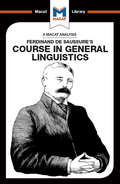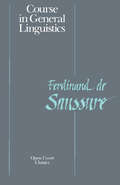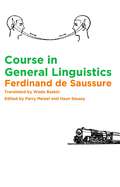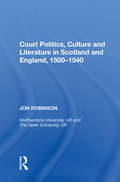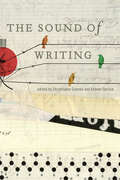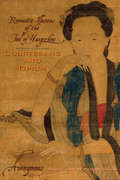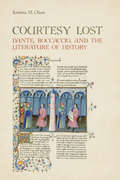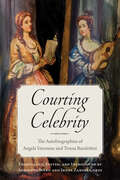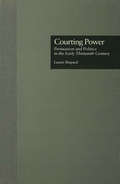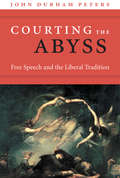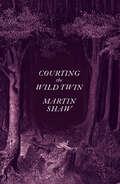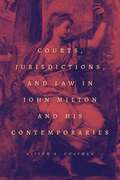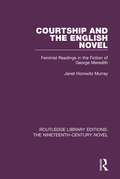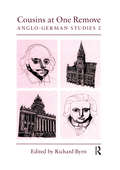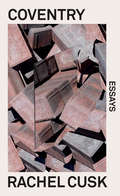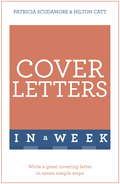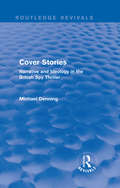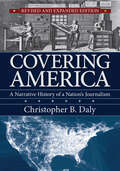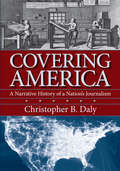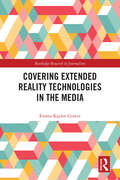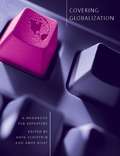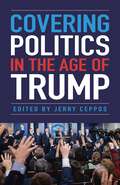- Table View
- List View
Course in General Linguistics
by Brittany Pheiffer Noble Laura E.B. KeyFerdinand de Saussure’s Course in General Linguistics is one of the most influential texts of the 20th-century – an astonishing feat for what is, at heart, a series of deeply technical lectures about the structure of human languages. What the Course’s vast influence shows, fundamentally, is the power of good interpretative skills. The interpretative tasks of laying down and clarifying definitions are often vital to providing the logical framework for all kinds of critical thinking – whether it be solving problems in business, or esoteric academic research. At the time sat which Saussure gave his lectures, linguistics was a scattered and inconsistent field, without a unified method or rigorous approach. He aimed to change that by setting down and clarifying definitions and distinctions that would provide a coherent methodological framework for the study of language. The terms laid down in the Course did exactly that – and they still make up the core of linguistic terminology a full century later. More than this, however, Saussure also highlighted the centrality of linguistic interpretation to understanding how we relate to the world, founding “semiotics”, or the study of signs – a field whose influence on academics across the humanities and social sciences is unparalleled.
Course in General Linguistics
by Ferdinand La SaussureThe Cours de linguistique generale, reconstructed from students' notes after Saussure's death in 1913, founded modern linguistic theory by breaking the study of language free from a merely historical and comparativist approach. Saussure's new method, now known as Structuralism, has since been applied to such diverse areas as art, architecture, folklore, literary criticism, and philosophy.
Course in General Linguistics (Bloomsbury Revelations Ser.)
by Ferdinand de SaussureThe founder of modern linguistics, Ferdinand de Saussure inaugurated semiology, structuralism, and deconstruction and made possible the work of Jacques Derrida, Roland Barthes, Michel Foucault, and Jacques Lacan, thus enabling the development of French feminism, gender studies, New Historicism, and postcolonialism. Based on Saussure's lectures, Course in General Linguistics (1916) traces the rise and fall of the historical linguistics in which Saussure was trained, the synchronic or structural linguistics with which he replaced it, and the new look of diachronic linguistics that followed this change. Most important, Saussure presents the principles of a new linguistic science that includes the invention of semiology, or the theory of the "signifier," the "signified," and the "sign" that they combine to produce.This is the first critical edition of Course in General Linguistics to appear in English and restores Wade Baskin's original translation of 1959, in which the terms "signifier" and "signified" are introduced into English in this precise way. Baskin renders Saussure clearly and accessibly, allowing readers to experience his shift of the theory of reference from mimesis to performance and his expansion of poetics to include all media, including the life sciences and environmentalism. An introduction situates Saussure within the history of ideas and describes the history of scholarship that made Course in General Linguistics legendary. New endnotes enlarge Saussure's contexts to include literary criticism, cultural studies, and philosophy.
Court Politics, Culture and Literature in Scotland and England, 1500-1540
by Jon RobinsonThe focus of this study is court literature in early sixteenth-century England and Scotland. The author examines courtly poetry and drama in the context of a complex system of entertainment, education, self-fashioning, dissimulation, propaganda and patronage. He places selected works under close critical scrutiny to explore the symbiotic relationship that existed between court literature and important socio-political, economic and national contexts of the period 1500 to 1540. The first two chapters discuss the pervasive influence of patronage upon court literature through an analysis of the panegyric verse that surrounded the coronation of Henry VIII. The rhetorical strategies adopted by courtiers within their literary works, however, differed, depending on whether the writer was, at the time of writing the verse or drama, excluded or included from the environs of the court. The different, often elaborate rhetorical strategies are, through close readings of selected verse, delineated and discussed in chapter three on David Lyndsay and chapter four on Thomas Wyatt and Thomas Elyot.
Court Reporting: Bad Grammar Good Punctuation Workbook
by Margaret Wakeman WellsA language arts workbook for court reporting
Courteous Capitalism: Public Relations and the Monopoly Problem, 1900-1930
by Christopher Cannon and Steven JusticeCourtesans and Opium: Romantic Illusions of the Fool of Yangzhou (Weatherhead Books on Asia)
by AnonymousIn his preface, the anonymous author of Courtesans and Opium describes his book as an act of penance for thirty years spent patronizing the brothels of Yangzhou. Written in the 1840s, his story is filled with vice and dark consequence, portraying the hazards of the city's seedy underbelly and warning others against the example of the Fool.Chinese literature's first true "city novel," Courtesans and Opium recounts the illustrious career of a debauched soul enveloped by enthralling pursuits and romantic illusions. While socially acceptable marriages were arranged and often loveless, brothels offered men accomplished courtesans who served as both enchanting companions and sensual lovers. These professional sirens dressed in the latest styles and dripped with gold, silver, and jewels. From an early age, they were taught to excel at various arts and graces, which transformed the brothel into a kind of club for men to meet, exchange gossip, and smoke opium at their leisure.The Fool's fable follows five sworn brothers and their respective relationships with Yangzhou courtesans, revealing in acute detail the lurid materialism of this dangerous world—its violence and corruption as well as its seductive but illusory promise. Never before translated into English, Courtesans and Opium offers a brilliant window into the decadence of nineteenth-century China.
Courtesy Lost
by Kristina Marie OlsonIn Courtesy Lost, Kristina M. Olson analyses the literary impact of the social, political, and economic transformations of the fourteenth century through an exploration of Dante's literary and political influence on Boccaccio. The book reveals how Boccaccio rewrote the past through the lens of the Commedia, torn between nostalgia for elite families in decline and the need to promote morality and magnanimity within the Florentine Republic.By examining the passages in Boccaccio's Decameron, De casibus, and Esposizioni in which the author rewrites moments in Florentine and Italian history that had also appeared in Dante's Commedia, Olson illuminates the ways in which Boccaccio expressed his deep ambivalence towards the political and social changes of his era. She illustrates this through an analysis of Dante's and Boccaccio's treatments of the idea of courtesy, or cortesia, in an era when the chivalry of the declining aristocracy was being supplanted by the civility of the rising merchant classes.
Courting Celebrity: The Autobiographies of Angela Veronese and Teresa Bandettini (Toronto Italian Studies)
by Adrienne Ward Irene Zanini-CordiIn 1826 Angela Veronese, a gardener’s daughter, wrote and published the first modern autobiography by an Italian woman. Veronese’s account focuses on her unique experience as a peasant girl who came of age among the Venetian elite, and details how she attained a certain renown in and out of Italy by improvising, writing, and publishing her own lyrics. Courting Celebrity is a bilingual annotated edition of Veronese’s autobiography. To better elucidate Veronese’s thinking, the book includes the autobiographical writing of another contemporary Italian poet, Teresa Bandettini, a well-known Tuscan poet-improviser. The book offers a substantial sample of Veronese’s poems, translated and in the original. These compositions, together with detailed bibliographical documentation, point to the success of Veronese’s autobiographical enterprise and offer an unparalleled view of both high society and popular culture at the time. Courting Celebrity illustrates women’s practice in two key literary genres, poetry and autobiography, and illuminates the strategies of women’s self-fashioning and pursuit of celebrity.
Courting Power: Persuasion and Politics in the Early Thirteenth Century (Garland Studies in Medieval Literature #17)
by Laurie ShepardThis text chronicles a change in epistolary persuasion in the 1230's, crystallized at the imperial chancery of Frederick II, Emperor from 1220-1250. There, traditional appeals, premised on authority and harmony, were challenged by letters in which historical circumstances functioned as an integral part of the strategy of persuasion. Based on the close reading of "Artes Dictandi", as well as a series of letters issued from the papal and imperial chanceries, this book explores the theory and practice of medieval letter-writing. Letters are evaluated as verbal acts intended to persuade, with the public as the ultimate arbiter of success. The author argues that the form, proportion and style of letters were contoured by ideology.
Courting the Abyss: Free Speech and the Liberal Tradition
by John Durham PetersCourting the Abyss updates the philosophy of free expression for a world that is very different from the one in which it originated. The notion that a free society should allow Klansmen, neo-Nazis, sundry extremists, and pornographers to spread their doctrines as freely as everyone else has come increasingly under fire. At the same time, in the wake of 9/11, the Right and the Left continue to wage war over the utility of an absolute vision of free speech in a time of increased national security. Courting the Abyss revisits the tangled history of free speech, finding resolutions to these debates hidden at the very roots of the liberal tradition. A mesmerizing account of the role of public communication in the Anglo-American world, Courting the Abyss shows that liberty's earliest advocates recognized its fraternal relationship with wickedness and evil. While we understand freedom of expression to mean "anything goes," John Durham Peters asks why its advocates so often celebrate a sojourn in hell and the overcoming of suffering. He directs us to such well-known sources as the prose and poetry of John Milton and the political and philosophical theory of John Locke, Adam Smith, John Stuart Mill, and Oliver Wendell Holmes Jr., as well as lesser-known sources such as the theology of Paul of Tarsus. In various ways they all, he shows, envisioned an attitude of self-mastery or self-transcendence as a response to the inevitable dangers of free speech, a troubled legacy that continues to inform ruling norms about knowledge, ethical responsibility, and democracy today. A world of gigabytes, undiminished religious passion, and relentless scientific discovery calls for a fresh account of liberty that recognizes its risk and its splendor. Instead of celebrating noxious doctrine as proof of society's robustness, Courting the Abyss invites us to rethink public communication today by looking more deeply into the unfathomable mystery of liberty and evil.
Courting the Wild Twin
by Martin Shaw"Fabulous."—Dan Richards, author of Holloway"Terrifically strange and thrilling."—Melissa Harrison, author of All Among the Barley"A modern-day bard."—Madeline Miller, author of CirceThis is a book of literary activism – an antidote to the shallow thinking that typifies our age. In Courting the Wild Twin, acclaimed scholar, mythologist and author of Smoke Hole and Bardskull, Martin Shaw unravels two ancient European fairy tales concerning the mysterious &‘wild twin&’ located deep inside all of us. By reading these tales and becoming storytellers ourselves, he challenges us to confront modern life with purpose, courage, and creativity.Martin summons the reader to the "ragged edge of the dark wood" to seek out this estranged, exiled self – the part we generally shun or ignore to conform to societal norms – and invite it back into our consciousness. If there was something we were meant to do with our few, brief years on Earth, we can be sure that our wild twin is holding the key.After all, stories are our secret weapons – and they might just save us.
Courts, Jurisdictions, and Law in John Milton and His Contemporaries
by Alison A. ChapmanJohn Milton is widely known as the poet of liberty and freedom. But his commitment to justice has been often overlooked. As Alison A. Chapman shows, Milton’s many prose works are saturated in legal ways of thinking, and he also actively shifts between citing Roman, common, and ecclesiastical law to best suit his purpose in any given text. This book provides literary scholars with a working knowledge of the multiple, jostling, real-world legal systems in conflict in seventeenth-century England and brings to light Milton’s use of the various legal systems and vocabularies of the time—natural versus positive law, for example—and the differences between them. Surveying Milton’s early pamphlets, divorce tracts, late political tracts, and major prose works in comparison with the writings and cases of some of Milton’s contemporaries—including George Herbert, John Donne, Ben Jonson, and John Bunyan—Chapman reveals the variety and nuance in Milton’s juridical toolkit and his subtle use of competing legal traditions in pursuit of justice.
Courtship and the English Novel: Feminist Readings in the Fiction of George Meredith (Routledge Library Editions: The Nineteenth-Century Novel #30)
by Janet Horowitz MurrayFirst published in 1987, these essays deal with the three major novels of George Meredith. It explores in particular Meredith’s feminism and demonstrates how each novel embodies his very modern views of the relations between the sexes. This book will be of interest to those studying 19th Century literature and feminism.
Cousins at One Remove: Anglo-German Studies
by R.F.M. Byrn"This collection of essays is a sequel to ""Anglo-German Studies"" published in 1992 by the Leeds Philosophical and Literary Society. The emphasis of this volume is on the English reception of German literature."
Coventry: Essays
by Rachel CuskA selection of her non-fiction writings that offer both new insights on the themes at the heart of her fiction and forge a startling critical voice on some of our most personal, social and artistic questions. Coventry encompasses memoir, cultural criticism and writing about literature, with pieces on family life, gender, politics, D.H. Lawrence, Francoise Sagan and Elena Ferrante. Named for an essay in Granta (“Every so often, for offences actual or hypothetical, my mother and father stop speaking to me. There’s a funny phrase for this phenomenon in England: it’s called being sent to Coventry”), this collection is pure Cusk and essential reading for our age: fearless, unrepentantly erudite and dazzling to behold.
Cover Letters In A Week: Write A Great Covering Letter In Seven Simple Steps
by Hilton Catt Patricia Scudamore<p>Sunday: Understand the importance of first impressions and the common mistakes people make <p>Monday: Ensure your application is taken seriously with a cover letter that is concise, complements your CV and is targeted to the job you have applied for <p>Tuesday: Discover how to style and structure your cover letter with advice on forms of address, etiquette, fonts, margins and the importance of 'white space' <p>Wednesday: Design your cover letter to engage your audience and overcome the competition for advertised jobs <p>Thursday: Design a speculative cover letter to approach the invisible job market <p>Friday: Learn how to address cover letters to agencies and recruitment consultants <p>Saturday: Learn from your applications, whether successful or not, and develop your writing style for the future</p>
Cover Stories: Narrative and Ideology in the British Spy Thriller (Routledge Revivals)
by Michael DenningFirst published in 1987, this title tracks the spy thriller from John Buchanan to Eric Ambler, Ian Fleming and John Le Carré, and shows how these tales of spies, moles, and the secret service tell a history of modern society, translating the political and cultural transformations of the twentieth century into the intrigues of a shadow world of secret agents. Combining cultural history with narrative analysis, Cover Stories explores the two main traditions of the thriller: the thriller of the work, in which bureaucratic routines are invested with political meaning; and the thriller of leisure, in which the sports and games that kill time become a time of dangerous political contests. Examining the characteristic narrative structures of the spy novel – the adventure formulas and the plots of betrayal, disguise and doubles – Denning shows how they attempt to resolve crises and contradictions in ideologies of nation and empire, and of class and gender.
Cover Story (Student Book)
by Daniel SchwabauerCover Story is about more than learning to write well. It's about discovering why writing is (or can be) a lot of fun.
Covering America: A Narrative History Of A Nation's Journalism
by Christopher B. DalyJournalism is in crisis, with traditional sources of news under siege, a sputtering business model, a resurgence of partisanship, and a persistent expectation that information should be free. In Covering America, Christopher B. Daly places the current crisis within historical context, showing how it is only the latest challenge for journalists to overcome. <p><p> In this revised and expanded edition, Daly updates his narrative with new stories about legacy media like the New York Times and the Washington Post, and the digital natives like the Huffington Post and Buzzfeed. A new final chapter extends the study of the business crisis facing journalism by examining the "platform revolution" in media, showing how Facebook, Twitter, and other social media are disrupting the traditional systems of delivering journalism to the public. In an era when the factual basis of news is contested and when the government calls journalists "the enemy of the American people" or "the opposition party," Covering America brings history to bear on the vital issues of our times.
Covering America: A Narrative History of a Nation's Journalism
by Christopher B. DalyToday many believe that American journalism is in crisis, with traditional sources of news under siege from a failing business model, a resurgence of partisanship, and a growing expectation that all information ought to be free. In Covering America, Christopher B. Daly places the current crisis within a much broader historical context, showing how it is only the latest in a series of transitions that have required journalists to devise new ways of plying their trade. Drawing on original research and synthesizing the latest scholarship, Daly traces the evolution of journalism in America from the early 1700s to the "digital revolution" of today. Analyzing the news business as a business, he identifies five major periods of journalism history, each marked by a different response to the recurrent conflicts that arise when a vital cultural institution is housed in a major private industry. Throughout his narrative history Daly captures the ethos of journalism with engaging anecdotes, biographical portraits of key figures, and illuminating accounts of the coverage of major news events as well as the mundane realities of day-to-day reporting.
Covering Extended Reality Technologies in the Media (Routledge Research in Journalism)
by Emma Kaylee GravesThis book presents a study of the news coverage of extended reality technologies (virtual, augmented and mixed reality; or XR) and how this news corresponds with the marketing of XR products. Focusing on a group of recently emerging technological products, the book offers in-depth analysis of the news coverage of XR technologies and explores the overlap between news discourse and promotional discourse by comparing the way these products are framed in the news and their marketing materials. Using both quantitative and qualitative data, it discusses the topics covered in XR news, as well as the sources used and the specific framing techniques that appear in both XR news and marketing materials. In addition to these findings, it also provides a set of frame categories that can be used by other researchers analysing the media coverage of emerging technologies. Ultimately arguing that the news represents XR in such a way that treats readers as consumers instead of citizens, prioritising the interests of XR companies rather than news audiences, this book will be of interest to students and researchers in media and communications, discourse studies, journalism, PR and marketing and innovation studies, as well as XR practitioners.
Covering Globalization: A Handbook for Reporters
by Amer Bisat Schiffrin AnyaThe first journalism textbook for reporters who cover finance and economics in developing and transitional countries, Covering Globalization is an essential guide to the pressing topics of our times. Written by economists from the Asian Development Bank and the International Monetary Fund as well as journalists who have worked for Dow Jones, the Financial Times, the New York Times, Fortune, and Reuters--and with an introduction by Nobel Laureate Joseph E. Stiglitz--this invaluable resource helps reporters write about subjects such as banking and banking crises, pension reform, privatization, trade agreements, central banks, the World Bank, sovereign debt restructuring, commodity markets, corporate governance, poverty-eradication programs, and the "resource curse." Each chapter explains the basic economic principles and current thinking on a given topic and provides tips on what to look for when covering specific subjects; a way to structure business and economics stories; a way to use the Internet for reporting with links to more information online; extensive glossaries and much more.
Covering Globalization: A Handbook for Reporters
by Amer Bisat Schiffrin Anya Eds.The first journalism textbook for reporters who cover finance and economics in developing and transitional countries, Covering Globalization is an essential guide to the pressing topics of our times. Written by economists from the Asian Development Bank and the International Monetary Fund as well as journalists who have worked for Dow Jones, the Financial Times, the New York Times, Fortune, and Reuters—and with an introduction by Nobel Laureate Joseph E. Stiglitz—this invaluable resource helps reporters write about subjects such as banking and banking crises, pension reform, privatization, trade agreements, central banks, the World Bank, sovereign debt restructuring, commodity markets, corporate governance, poverty-eradication programs, and the "resource curse." Each chapter explains the basic economic principles and current thinking on a given topic and provides tips on what to look for when covering specific subjects; a way to structure business and economics stories; a way to use the Internet for reporting with links to more information online; extensive glossaries and much more.
Covering Politics in the Age of Trump
by Jerry CepposLike politics, journalism has been turned topsy-turvy by the presidency of Donald Trump. Covering Politics in the Age of Trump takes a wide-ranging view of the relationship between the forty-fifth president and the Fourth Estate. In concise, illuminating, and often personal essays, twenty-four top journalists address topics such as growing concerns about political bias and journalistic objectivity; increasing consternation about the media’s use of anonymous sources; the practices journalists employ to gain access to wary administration officials; and reporters’ efforts to improve journalism in an era of twenty-four-hour cable news. Contributors include: Mark Ballard, Peter Bhatia, Rebecca Buck, Carl Cannon, Jill Colvin, Charlie Cook, McKay Coppins, Mary C. Curtis, Paul Farhi, Quint Forgey, Major Garrett, Ginger Gibson, “Fin” Gomez, Jesse J. Holland, Clark Hoyt, Sarah Isgur, Mark Leibovich, Ashley Parker, Fernando Pizarro, Tom Rosenstiel, Frank Sesno, Alexis Simendinger, Steve Thomma, and Salena Zito.The Trump administration’s contentious relationship with the media has altered the public’s expectations regarding the news and national politics. In Covering Politics in the Age of Trump, top political reporters explore this dynamic, relaying stories from the campaign trail to the briefing room that illustrate the new challenges faced by journalists working in the age of “fake news.”
